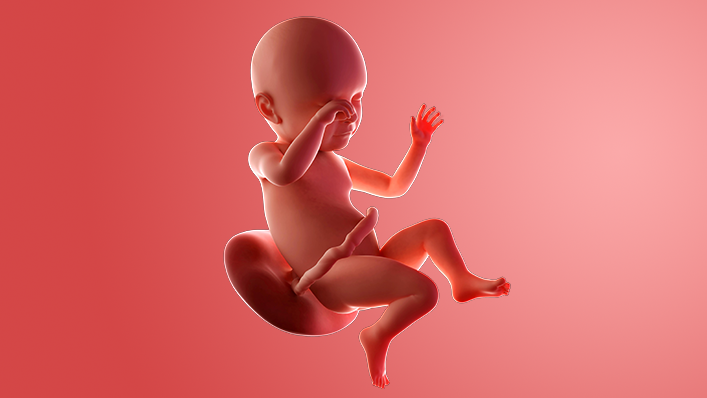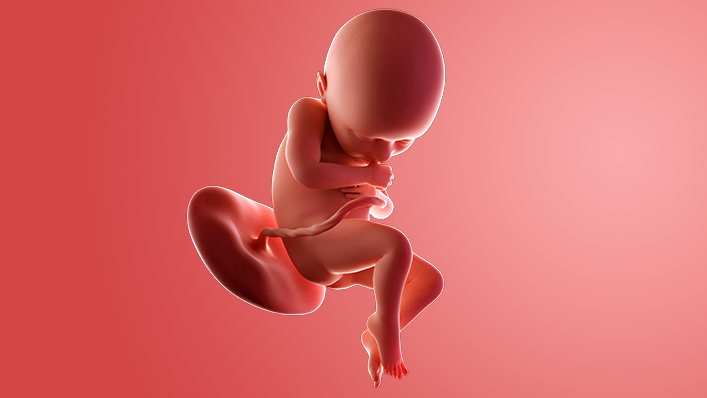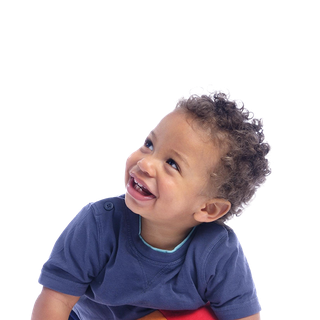- Week 28
- Week 29
- Week 30
- Week 31
- Week 32
- Week 33
- Week 34
- Week 35
- Week 36
- Week 37
- Week 38
- Week 39
- Week 40
- Week 41
Week 37
Your baby could come any day now – and this would not be considered early.
Your baby is now "full term", which means that they're probably big enough, and mature enough, to survive in the outside world. However, you still may have to wait another few weeks.
If you're carrying twins, then you will probably give birth this week. Twin pregnancies rarely go beyond 38 weeks.
The Twins Trust has more information.
What's happening in my body?
Around 95% of babies will now be head down, facing their mother's back, which is the best position for labour.
When the baby's head moves down into the pelvis, it's said to be "engaged". You might see your bump drop a bit when this happens.
If your baby's still in the bottom-down position (breech), don't worry. There's still time for them to turn. Some babies don't move into place until labour starts.
When you're sitting down, try leaning forwards, with your hips above your knees. It's not a proven technique but many women say that it coaxes the baby into position, and it certainly will not do any harm.
You might find that you're getting more vaginal discharge now and Braxton Hicks contractions. These are the "practice contractions", which can feel uncomfortable but should not be painful.
You could also be getting a sudden urge to spring clean. That's your "nesting" instinct kicking in.
Just don't overdo it: you should try to rest as much as possible.
RSV vaccination
Have you had the RSV (respiratory syncytial virus) vaccine? It's usually offered at around week 28 but can be given later if needed, right up until you go into labour.
Having the vaccination can lower your baby's risk of a severe lung infection called bronchiolitis, which can make it difficult for your baby to breathe and feed. If you've not had it yet, speak to your midwife or a GP.
3rd trimester pregnancy symptoms (at 37 weeks)
As your baby moves down into your pelvis, you may start to feel some relief from pregnancy symptoms such as heartburn, indigestion and needing to pee every 5 minutes.
Your signs of pregnancy could also include:
- painless contractions around your bump, known as Braxton Hicks contractions
- sleeping problems (week 19 has information on feeling tired)
- stretch marks (week 17 has information on stretch marks)
- swollen and bleeding gums (week 13 has information on gum health during pregnancy)
- pains on the side of your baby bump, caused by your expanding womb ("round ligament pains")
- piles (week 22 has information on piles)
- headaches (read about headaches in pregnancy on NHS.uk)
- backache
- indigestion and heartburn (week 25 has information on digestive problems)
- bloating and constipation (week 10 has information on bloating)
- leg cramps (week 20 has information on how to deal with cramp)
- feeling hot
- dizziness
- swollen hands and feet
- urine infections
- vaginal infections (week 15 has information on vaginal health)
- darkened skin on your face or brown patches – this is known as chloasma or the "mask of pregnancy"
- greasier, spotty skin
- thicker and shinier hair
You may also experience symptoms from earlier weeks, such as:
- mood swings (week 8 has information on mood swings)
- morning sickness (week 6 has information on dealing with morning sickness)
- weird pregnancy cravings (week 5 has information on pregnancy cravings)
- a heightened sense of smell
- sore or leaky breasts (week 14 has information on breast pain) – a white milky pregnancy discharge from your vagina and light spotting (seek medical advice for any bleeding)
How will I know I'm in labour?
There are several signs that your labour might be starting, including:
- contractions or tightenings
- a "show", when you get a sticky blob of mucus in your pants, which might be yellow or bloody
- back pain
- an urge to go to the toilet, this is caused by your baby's head pressing on your bladder or bowels
- your waters breaking
You can read more about them in our guide; signs of going into labour. It also includes information on when to call your midwife or maternity unit, and tips to ease you through the early stages of labour.
Talk to your midwife about group B strep
Group B strep is a common bacteria – up to 2 in 5 people have it living in their body.
If you carry group B strep while you're pregnant, there's a small risk it could make your baby seriously ill. Most group B strep infections in newborn babies are preventable.
For more information talk to your midwife, or visit the Group B Strep Support website.
What does my baby look like?
Your baby, or foetus, is around 48.6cm long from head to heel. That's approximately the length of a leek.
Your baby will be trying out different facial expressions, such as frowning and smiling. This is random and not linked to sadness or happiness.
By now, you will hopefully know when your baby's active and when they're calmer.
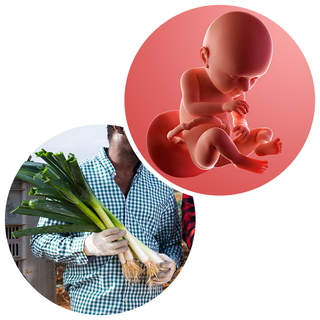
Postnatal depression
It’s a good time to learn about postnatal depression, and to let your partner know about it too.
More than 1 in 10 women experience it after pregnancy. Fathers and partners can get it too, but it’s more likely to affect you.
The condition usually develops in the first year after having your baby, and it can come on gradually, so many women don’t realise they have it at first.
Signs can include:
- feeling sad or having a low mood
- losing interest in things you usually enjoy
- feeling tired all the time, with no energy
- having trouble sleeping at night, and feeling sleepy during the day
- finding it hard to care for yourself or your baby
- withdrawing from social contact or feeling alone
- struggling to concentrate or make decisions
- having frightening thoughts, like worrying about hurting your baby
Remember, postnatal depression is an illness like any other. It’s not your fault. It can happen to anyone and doesn’t make you a bad parent.
Non-urgent advice: Speak to a GP, midwife or health visitor as soon as possible if:
- you think you or your partner might have postnatal depression
Many midwives and health visitors are trained to spot the signs and can offer support that helps.
Action stations
More in week-by-week
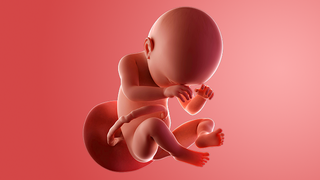
Week 38
Your baby's full term now and could come any day!
More in week-by-week guide to pregnancy
